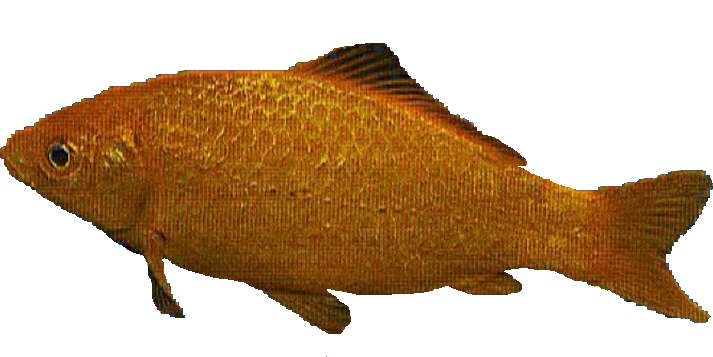



Details of all species referred to in these Fish Care Sheets can be found in the FBAS Booklet No 6 - National Show Fish Sizes. Click HERE for information.

Singletail Goldfish 01/02/2004
Species: Carassius auratus
Family: Cyprinidae
Geographic Origin: Asia. Originally Central China.
Now selectively bred worldwide to produce many varieties.
Common Names: Common Goldfish, Comets, Bristol & London Shubunkins
Compatibility: These fish will grow to 350mm but rarely so, as most are kept
in aquariums or garden ponds. They are quite compatible with
any other fish of a similar size.
Often they are the ones at a disadvantage.
Minimum Aquarium Size: A 600mm x 380mm x 380mm (24” x 15” x 15”)
aquarium should be considered as the minimum.
For large fish over 80mm, then a tank of at least
1500mm x 450mm x 450mm (60” x 18” x 18")
will be necessary.
Temperature: 0o/28oC 32o/82oF. In general, our ambient temperatures are
consideredto be satisfactory.
In ponds, oxygen deficiency at higher summer temperatures
will cause problems.
Habitat: All commercial singletail goldfish are suitable for stocking garden
ponds. Many are also kept quite satisfactorily in aquariums.
To over-winter, the pond must have an area 900mm deep and be
cleared of mulm and rotting leaves in the late Autumn.
Water Parameters: These fish are not fussy when it comes to water as long as
it is low in nitrate and devoid of chlorine; one should avoid
changing more than a third of their water at any one time
unless absolutely necessary.
Health: Not particularly prone to health problems. Accidental damage due to
knocking into rockwork, even vigorous spawning activity, may cause
fungus problems.
Always treat in a separate container away from other fish.
Diet: Omnivorous. Will basically consume anything. Many commercial foods
available. It is important to vary the diet and feed a live food at least
twice a week if possible.
Plants: Will enjoy a well planted tank.
Breeding Notes : Will spawn spontaneously in an outside pond when water
temperatures rise in the Spring.
Inter-variety breeding prevalent unless steps are taken to
separate varieties and control spawning as required.
Availability: Commercial bred fish widely available.
Line-bred specimens only available from specialist breeder.
Before you buy check, that the fish appears healthy and alert;
avoid listless fish with folded fins.
Show Class: FBAS Show Class U
© FBAS 2003.RDE Fish Care Sheet 26 1/1
Download this Care Sheet Photographs
Aquarium Management Care Sheet Index
Last updated October 2016
Fish Care Sheet Index
Pond Care Sheet Index